Bell’s Full-10 is its top-tier full-face mountain bike helmet. Designed to offer the best head protection possible, the helmet is aimed at downhill and enduro riders or racers.
Although the silhouette is somewhat similar to the Full-9, the Full-10’s predecessor, this new helmet offers additional safety features along with some neat little improvements to help make living with it even easier.
While the Full-10 isn’t cheap, the end result does help to justify the price tag, thanks to its all-day comfort, fit and feel. Though full-on coverage does mean you’ll still get pretty sweaty quite quickly on warmer days, despite the hefty vents,.
Bell Full-10 helmet specifications and details
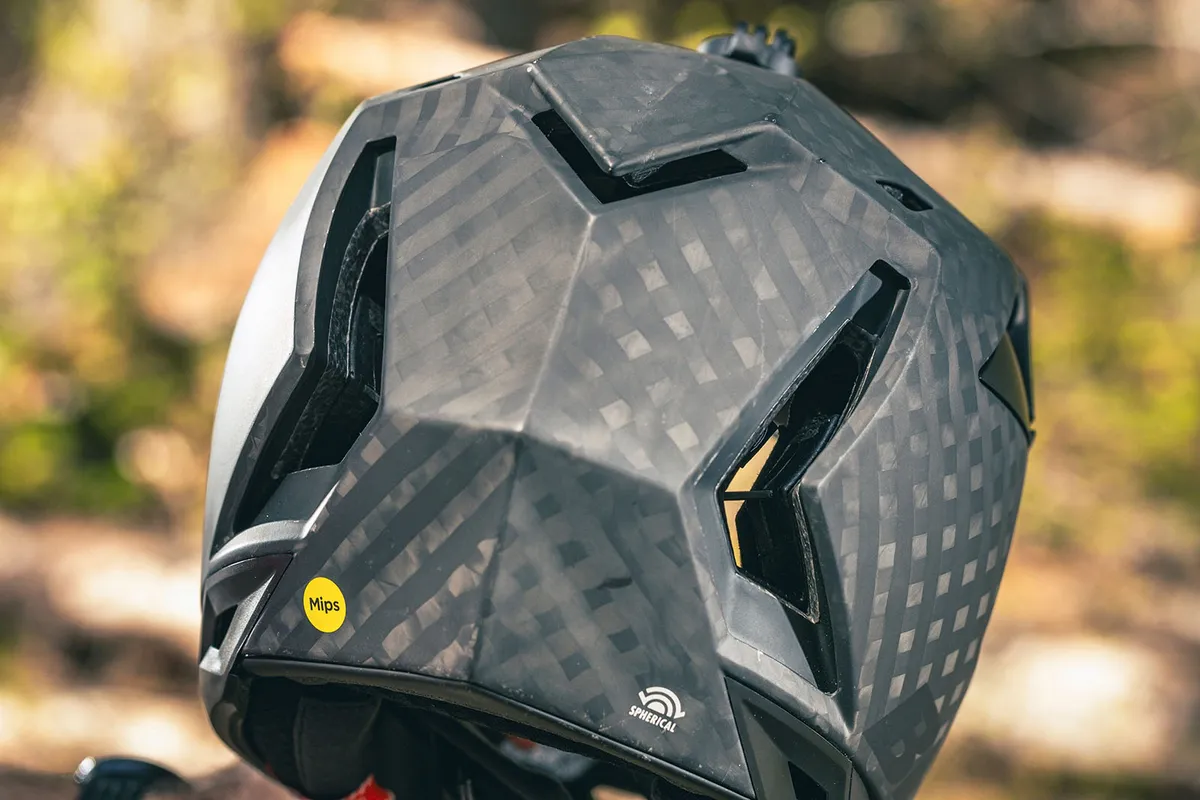
The Bell Full-10 full-face helmet comes in four sizes (XS/S, M, L, XL/XXL) and uses an outer shell made from lightweight, unidirectional carbon fibre.
In a medium size, the Full-10 weighs 1,070g, which is 30g heavier than the Giro Insurgent Spherical, which shares a lot of the same safety features (Bell and Giro are owned by the same company – Vista Outdoor).
One key aspect of the Full-10’s safety credentials is the Spherical Technology which, according to Bell, allows the brand to seamlessly integrate MIPS into the design, creating a safe helmet without impacting on ventilation across the top of the head.
The Spherical system works like a ball and socket joint and consists of inner and outer EPS shells which are connected using small elastomers.
These rubbery tethers allow the movement between the two shells. On impact, the outer shell is able to rotate over the inner shell which is said to help with the re-direction of the impact force to the head.
Huge air intakes over the brow and at the temples are designed to draw in air to help cool your head when you’re working hard. To keep that air moving, there are nine exhaust ports dotted around the sides and the rear of the Full-10.

The closure uses a double D-ring to secure the helmet safely in place.
Bell has added a magnetic tab on the end of the strap and a corresponding spot for it to fix on one of the rings. While this is similar to that of the Giro Insurgent (which uses a popper, rather than a magnet), it’s quicker and far less fiddly to use.
Magnets are used to hold the cheek pads in place which are easy to remove if they need swapping to thicker or thinner alternatives (which are included) or in the case of an accident.
The long peak offers a decent amount of adjustment but doesn’t have any distinct positions to choose from.
Other extras include the clip-in camera mount which fixes into the lid just above the peak along with the sturdy helmet bag.
Bell Full-10 helmet performance
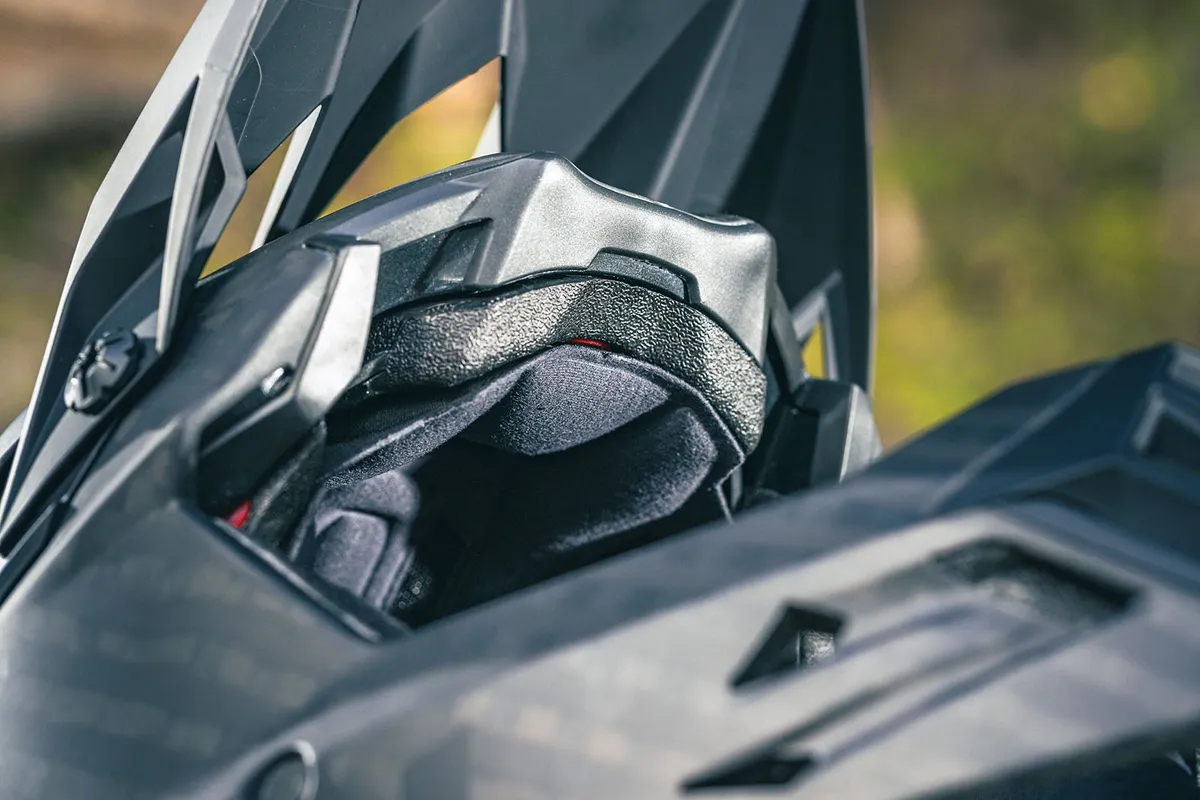
Thanks to Bell's additional cheek pads in the box, tailoring the already impressive fit is easy, especially as the cheek pads can be removed easily.
I opted for the size medium to fit my 56cm head. For me, the fit was just the right side of snug, though more (if only slightly) generous than the likes of the Troy Lee Designs D4 and Fox’s Rampage Pro Carbon.
Of course, if you have the chance to try before you buy, I’d highly recommend it, simply down to the fact that helmet fit is very subjective, and the Bell Full-10 is expensive.
While they are held in place with magnets, I had zero issues with the cheek pads slipping out while putting on or removing the helmet throughout testing.
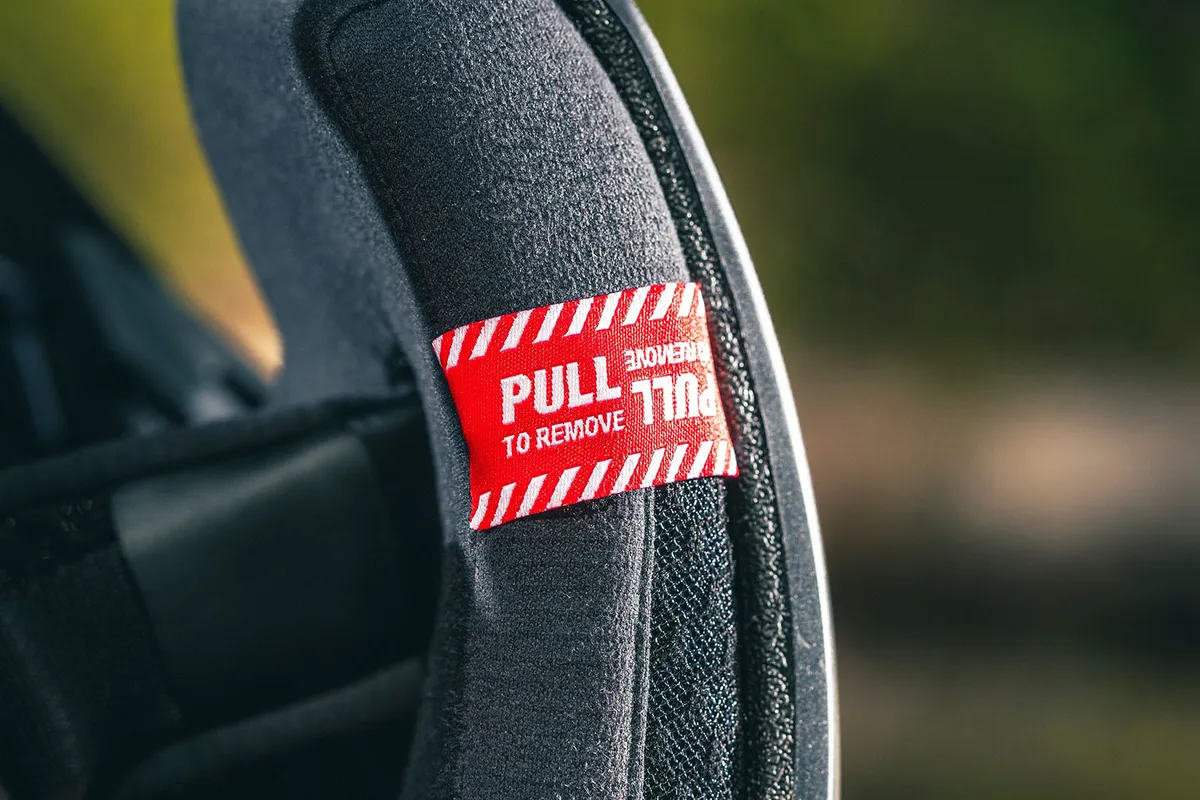
The padding feels decently plush, with no noticeable seams or ridges to cause any kind of discomfort.
There’s enough space to comfortably accommodate your ears, too.
Buckling the strap is straightforward enough, assuming you’ve used a double D-ring closure before. I’m a big fan of the magnetic tab on the end of the strap which helps to tether it securely and tidy things up no end. It’s quick and easy to use and works every time.
At 1,070g, the Full-10 is a decent, very competitive weight, especially considering the size and coverage.
While the weight may not be such an issue if you’re wearing a full-face for downhill, where you'll likely be removing it between runs, it can play a part in comfort if riding or racing enduro, where you’ll likely need to keep it on for longer.
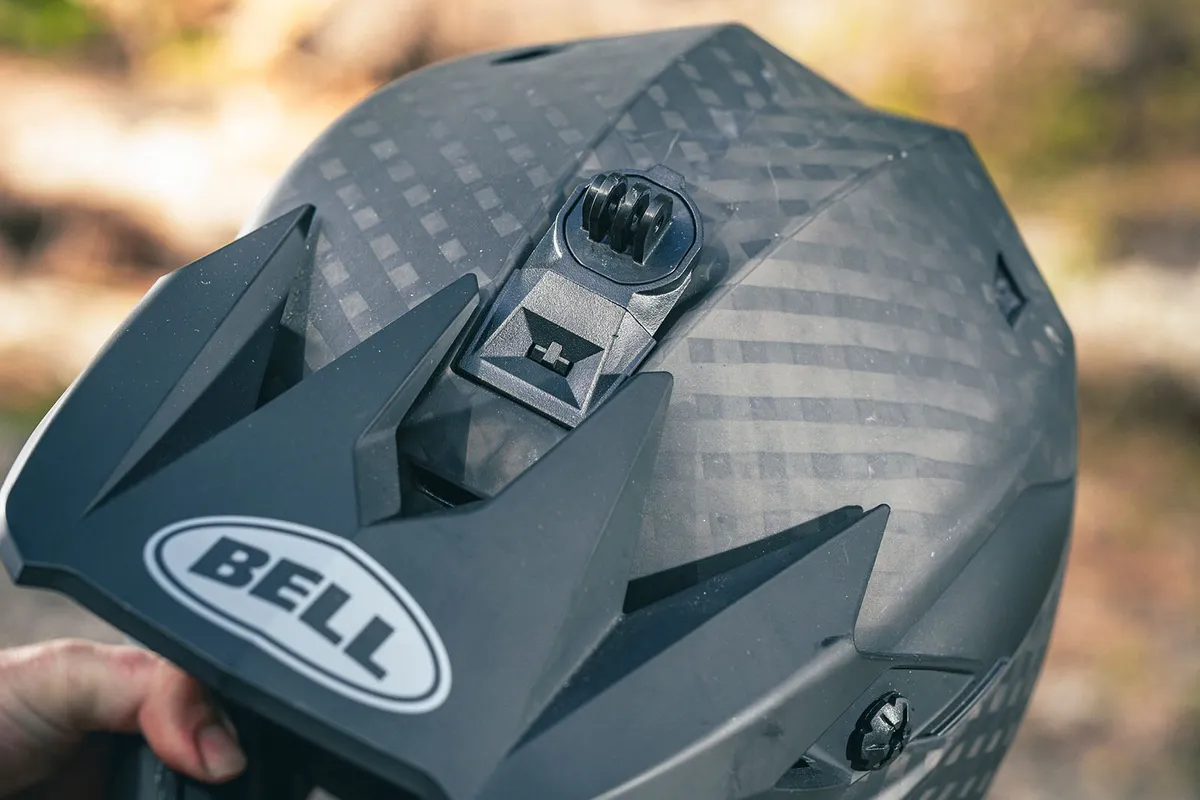
Even on warm days where I left it on my head for hours at a time, the Full-10’s weight never created any issues, and I was consistently impressed by the overall comfort.
That’s not to say I didn’t get a little hot-headed and sweaty, though. When moving at speed, the large brow ports do a great job of whisking air into the helmet, helping your head to cool down.
But keep the Full-10 on during a climb when the speeds are unlikely to rise above 10kph and you can get sweaty quite quickly. That’s no major news, though, and something common with all helmets designed to be as protective as this.
As the peak doesn’t have any distinct positions to securely sit in, I found I did need to keep tabs on where it sat, especially after putting on or taking off my goggles.
If you are keen on fitting an action camera to the helmet, Bell’s snap-on camera mount offers a very snug, secure fit. This means it takes a bit of effort to pop it back out of the fixture, but does mean once it’s in place, it’s totally rattle-free.
Overall, the Full-10 helmet feels great to wear, with plenty of coverage and enough comfort to ensure it’ll not annoy you after a solid day in the saddle. It does get a little warm, but what full-face lid doesn’t?
It’s remained secure and never once rattled about on my head thanks to the impressive fit, no matter how rough the trail became.
How does the Bell Full-10 helmet compare?
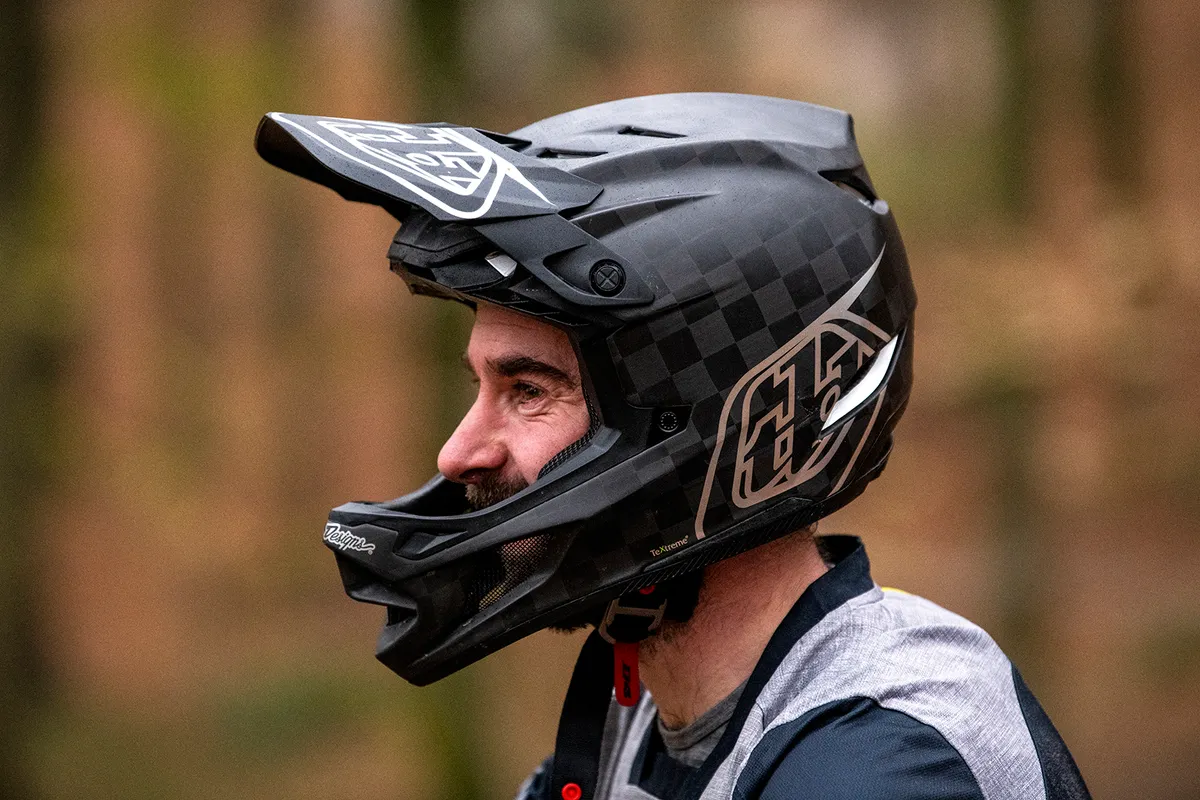
I rode the Bell Full-10 back-to-back with the Troy Lee Designs D4 on a variety of trails and in different temperatures to see just how they compare.
While the padding in each helmet feels almost equally plush, the D4 does offer a slightly snugger fit in a size medium. Sizing-wise, Troy Lee Designs do offer six sizes, compared to Bell’s four, so it could be that the D4’s fit is just a bit more accurate.
It’s not a huge difference and as ever it depends on what you prefer.
I’d say the venting in the Full-10 is ever so slightly better than that of the D4, though if you do need to wear either helmet when climbing, you’ll end up with a sweaty head either way.
The D4 is lighter, but not by much, and I’d argue that the 100g is almost impossible to notice while riding.
When it comes to price, the D4 comes in slightly cheaper than the Full-10.
It’s also available in more designs and has a slightly narrower profile compared to the very round Full-10, which some riders might prefer.
Bell Full-10 helmet bottom line
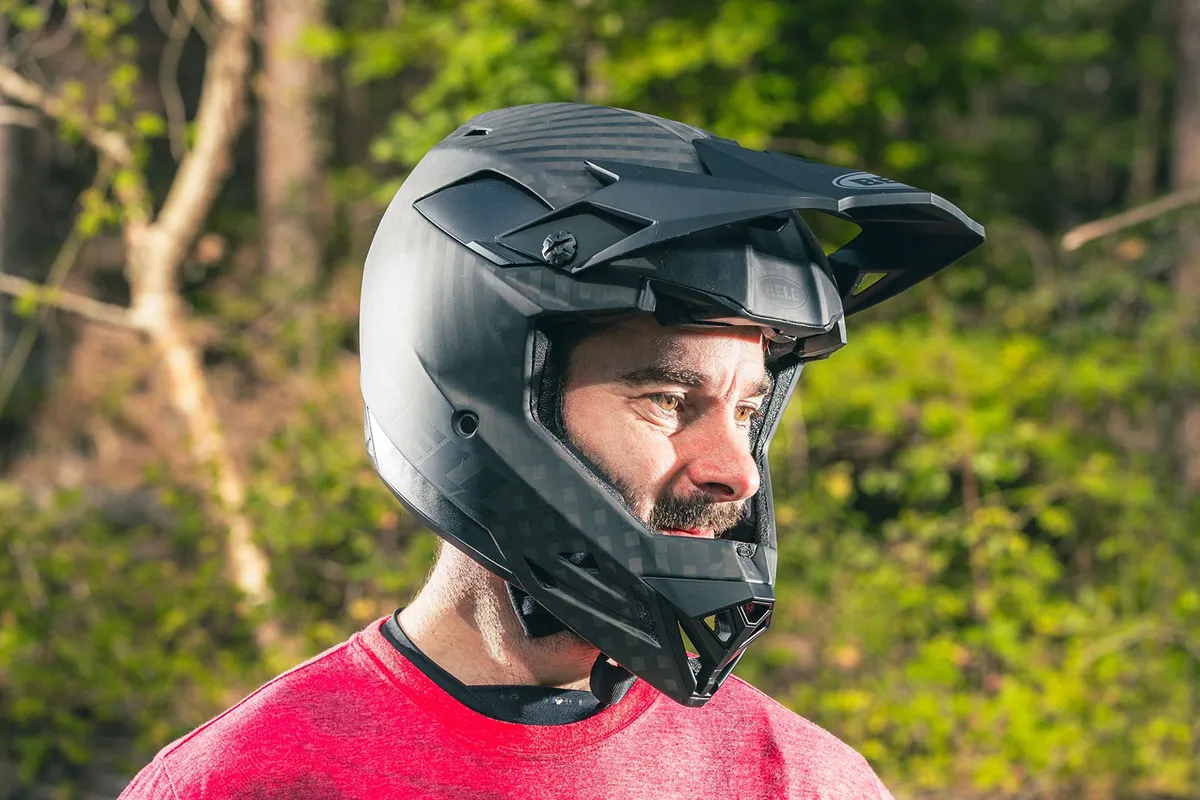
Although expensive, the Bell’s Full-10 is a great full-face helmet that offers comfort and protection in spades.
It balances weight, coverage, fit, feel and comfort incredibly well and can be worn for hours on end without feeling cumbersome or irritating.
Like any full-face helmet it can get pretty sweaty, but even so, the padding does a good job of soaking up that moisture and keeping it out of your eyes.
Alongside all of that, there are a number of neat little features that help it stand out from others which I really appreciated during testing, and why it’s become one of my preferred helmets to grab when hitting the more demanding trails.
Product
| Brand | Bell |
| Price | £580.00, $650.00 |
| Weight | 1070g |
Features
| MIPS | yes |
| Helmet type | mountain_bike_full_face |
| Features | Sizes: XS/S, M, L, XL/XXL Ventilation: Thermal Exchange Airflow System™ (T.E.A.S.) Visor: Fully Adjustable Flying Bridge™ Visor with air intake vents Colours: Matte Black, Arise Matte/Gloss White/Bali, Matte/Gloss White/Black Fasthouse |
